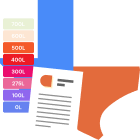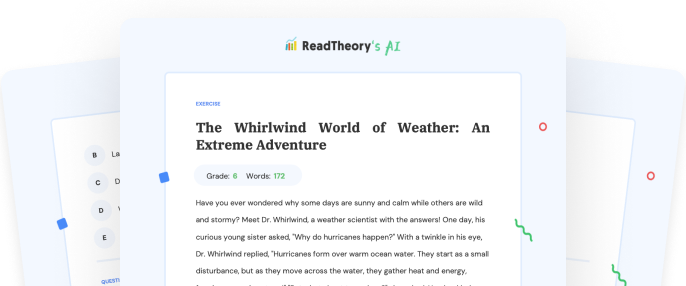Transform Your Teaching
with AI-Powered Worksheets
With ReadTheory’s Instant Worksheet Builder, you can create engaging, grade-appropriate worksheets tailored to your students in minutes. Spark curiosity, save time, and empower critical thinking with AI-powered tools designed for teachers like you.


Functions: The Vital Organs of Mathematics
Inside the human body, each organ, from the heart to the liver, has a specific role. They function individually, but together, they create a system that keeps us alive and active. Similarly, in mathematics, we encounter 'functions'. A function is a rule that takes certain inputs and gives them a specific output, much like how our lungs take in air and provide oxygen to our bodies. An essential aspect of functions is their 'domain', the set of all possible input values. Think of this as the food we eat - our bodies can only process certain types of food, this is our dietary domain. Next is the 'range', the set of all possible output values from a function. In our body analogy, this is the energy, waste, and growth that results from processing food. Notably, in a well-defined function, each input (domain) has exactly one output (range). Similarly, each type of food we consume results in a specific output in terms of energy, waste, and growth. Lastly, functions can be combined, like the combination of multiple organs working together for overall body function. In math, combining functions can result in more complex systems which are crucial in fields like physics, economics, and engineering. Just as understanding the function of organs helps us take better care of our bodies, understanding mathematical functions helps us solve real-world problems more efficiently. Indeed, functions could rightly be called the vital organs of mathematics.
Question 1
What is the 'domain' in a mathematical function?
The output of a function
The set of all possible output values
The set of all possible input values
The combination of multiple functions
None of the above
Question 2
What is the 'range' in a function?
The set of all possible input values
The set of all possible output values
The combination of functions
The input of a function
None of the above
Question 3
What happens when functions are combined?
It creates a more complex system
It simplifies the system
It has no effect on the system
It creates an undefined function
None of the above
Question 4
What is the analogy used for 'domain' and 'range' in the text?
Heart and liver
Food we eat and the energy, waste, and growth it produces
Lungs and oxygen
Organs and the body
None of the above
Question 5
True or False: In a well-defined function, each input (domain) can have multiple outputs (range).
True
False
Can't say
Sometimes True
Sometimes False
 or share via
or share via

Assign the ReadTheory pretest to determine students' reading levels.

Why Teachers Love
Instant Worksheet Builder?

Tailored Content for Every Student
Craft worksheets with passages and multiple-choice questions customized to your chosen topic and grade level, ensuring relevance and engagement.

Save Hours
of Prep Time
Our AI, Lexi, generates complete worksheets—passages, questions, and answers—in minutes, freeing you to focus on teaching, not planning.

Standards-Aligned Learning
Every worksheet is designed to boost reading comprehension and critical thinking, aligning seamlessly with State Standards to help your students shine.
Personalized teaching
for personalized learning
Browse worksheets created and refined by educators using Lexi—your source for inspiration and ready-to-use resources.


ReadTheory is free for Teachers to use.
Join thousands of educators using ReadTheory for free. Sign up today and start creating in just minutes!





